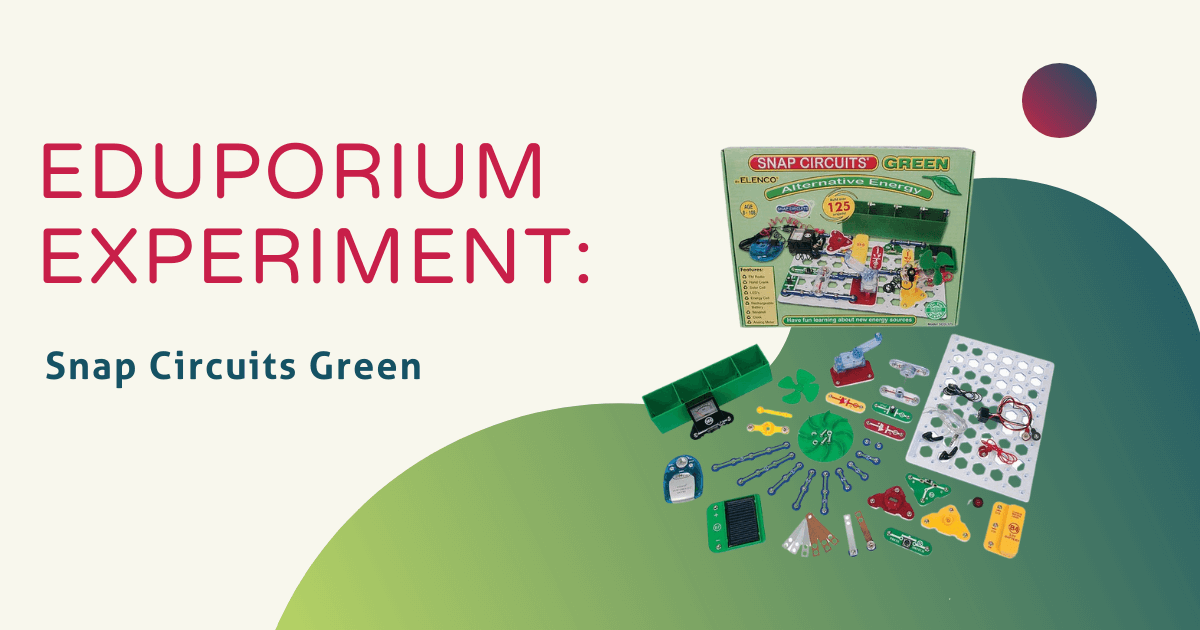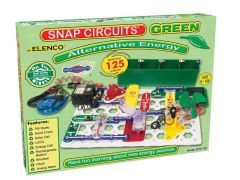As we move on from last week’s VR Event, we thought we’d touch base with our physical reality with an exploration of green technology this week. And, since Earth Day is coming up, it just seemed like the responsible thing to do. In our always-advancing world, green technology is more important than it has ever been before. Renewable resources (like the sun and wind) are plentiful and it’s important that we teachers educate their students how to harness them in the most effective ways.
Green technology is also an excellent teaching tool, because every classroom, no matter its size, economic standing, or location, has access to at least one renewable resource. In this week’s Eduporium Experiment, I took a look at Snap Circuits Green, a part of Snap Circuits’ successful line of STEM education tools focused on illustrating the power of alternative energy.
Snap Circuits is a fantastic system for introducing the complex ideas of circuitry and electricity to students of all ages. When I started learning about circuits in my freshman year of high school, I found the concepts abstract and difficult—I’ve always been a tactile learner, so to look at pictures of circuits and try to deduce how they worked was hard for me. Exploring Snap Circuits today, however, I learned a lot of useful things I didn’t know before—and it only took a few minutes!
Right out of the box, the Snap Circuits Green set promised to be a thorough experience of hands-on learning. The solid "nature" of the pieces and their bright, primary colors made me want to start trying them out right away. Before I could start to build anything, however, I needed to know how! Thankfully, the kit comes with a very comprehensive and detailed full-color manual to help students and teachers get started. It starts off with several pages of “Before You Use It” instructions, which cover how to use the kit, what each of the pieces can do, and a warning about how to avoid constructing dangerous short circuits. After reading all that, I felt I was prepared to start building my first circuits.
I started off with the simplest project in the book, the Crank Charger, where I wired up a hand crank to a battery and then to a volt meter so I could read the battery’s charge. The manual also walked me through connecting two LEDs to the circuit, which indicated when the battery was being read and when it was being charged by the hand crank. After that, I moved on to a more complex project called Multi Power. This combined more elements of the kit to make a system of creating power through a windmill, a solar panel, and the hand crank from the previous project, all hooked up to the volt meter to show the full power of these combined power sources (all of which are completely renewable).
The thing I liked most about the Snap Circuits Green kit is that it is so easy to use. All of the pieces are literally connected with snaps like the ones commonly found on clothes—since they’re metal, they’re conductive, but they’re also very easy to work with for big and little hands! I had a lot of fun playing with this kit—probably more fun than I’ve had learning about electricity in all my experiences with it. It’s a great way to get students excited about physics, electricity, and renewable energy, and it can certainly go a long way in transforming modern science classrooms in a fun and hands-on way!
If you have a product you’d like to see featured on the Eduporium Experiment, let us know! Send us a message on Twitter or Facebook and we’ll see what we can do. And, don’t forget to look out next Wednesday for the next edition of the Eduporium Experiment featuring the Makey Makey GO.





1 Comment